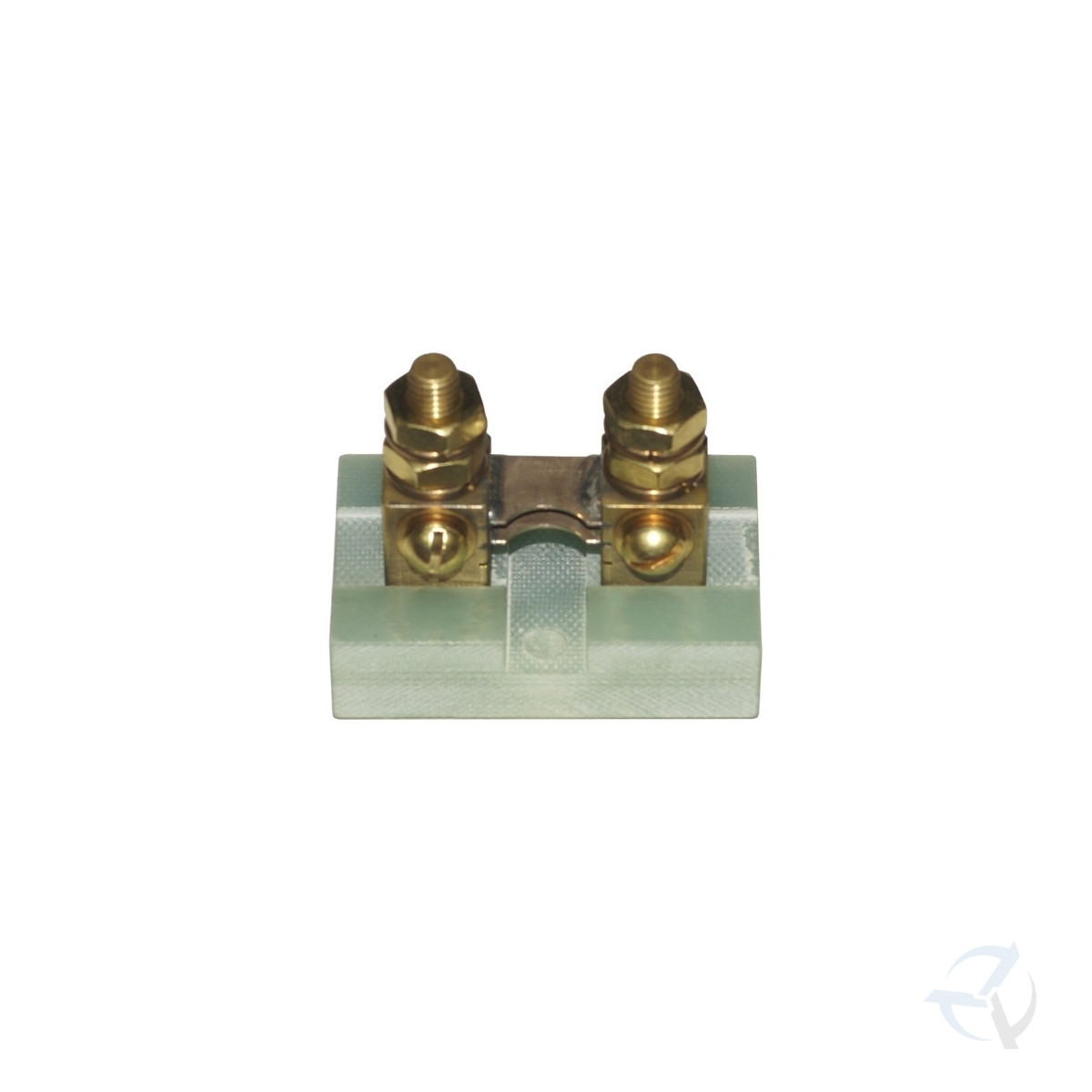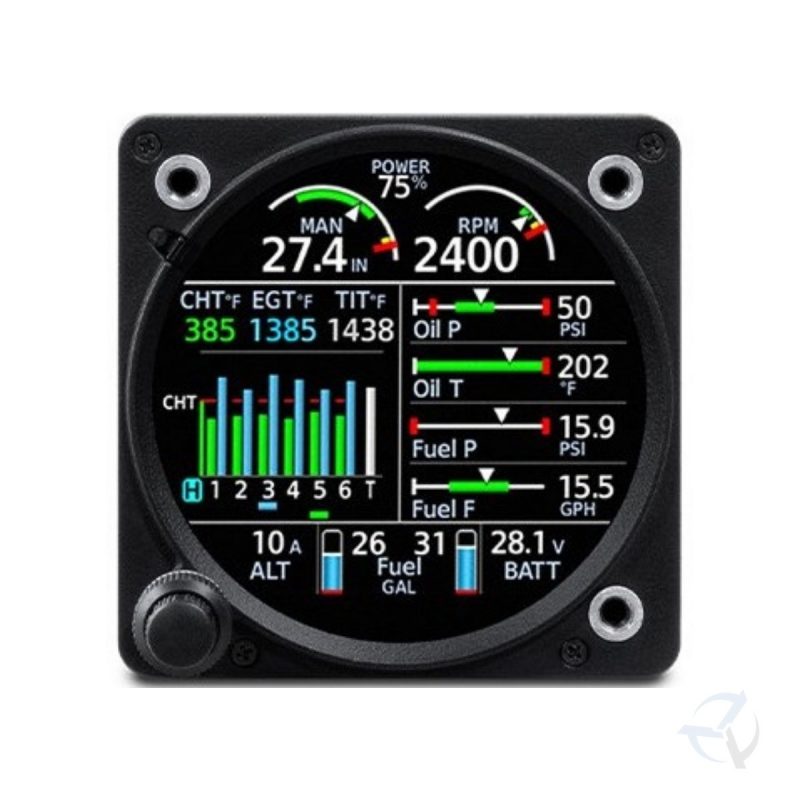Electrical current can be sensed by the G3X system either by Hall Effect current sensors or via the use of a traditional
ammeter shunt. The UMA 1C4 ammeter shunt included in Garmin sensor kits (Garmin P/N 909-D0000-00) is a
100 Amp/50 mv shunt.
Ammeter Shunt +/-50 mV, +/-100 amps
The current-carrying wires are attached to the large 1/4” lugs, while the current sense wires are
attached via the use of #8 ring terminals.
The ammeter shunt has two holes in the insulated base for mounting with #10 screws.
Note: It is important that no metal portion of the shunt touch any other portion of the aircraft or
exposed wiring. Large voltages and current are present in the shunt, and an electrical
short or fire could result from inadvertent contact.
The shunt should be installed in-line with the current being sensed. As noted below, the appropriate wire
should be cut and attached to each of the large ¼” lugs. A 1A fuse or other form of circuit protection must
be installed between the shunt and the applicable GEA 24/GSU 73 inputs to prevent inadvertent damage to
the GEA 24/GSU 73. Connect the two sense wires (attached to the #8 terminals) to the appropriate inputs
on the GEA 24/GSU 73 as referenced in the G3X interconnects in Section 30 through Section 33. If the
ammeter readings are shown with the opposite polarity, check to see if the sense wire connections are
reversed.
An alternator ammeter shunt should be installed inline in the alternator output (“B” terminal). A battery
ammeter shunt should be installed between the battery positive terminal and the battery contactor.
Depending on the location of the alternator or battery relative to its supported electrical bus, it is typically
desirable to install the shunt on the firewall near where the alternator or battery output would normally
penetrate the firewall.





Reviews
There are no reviews yet.